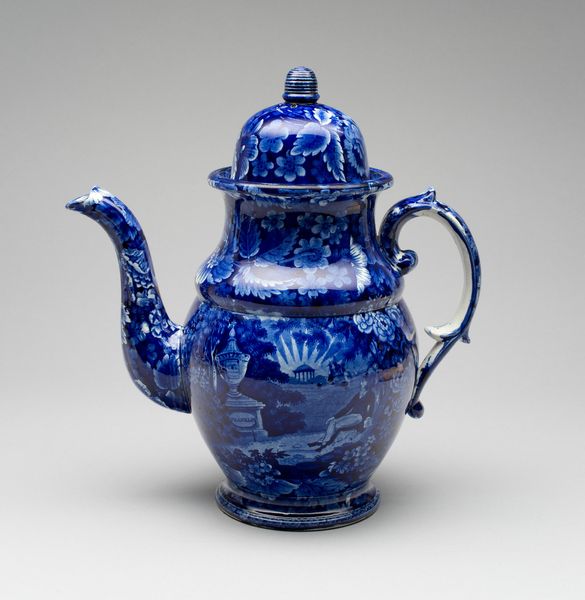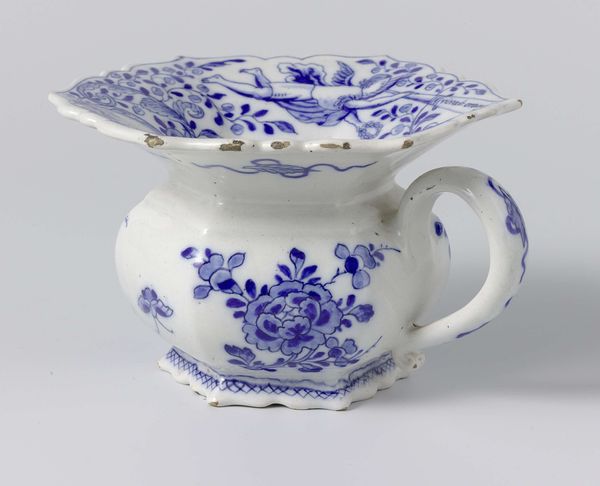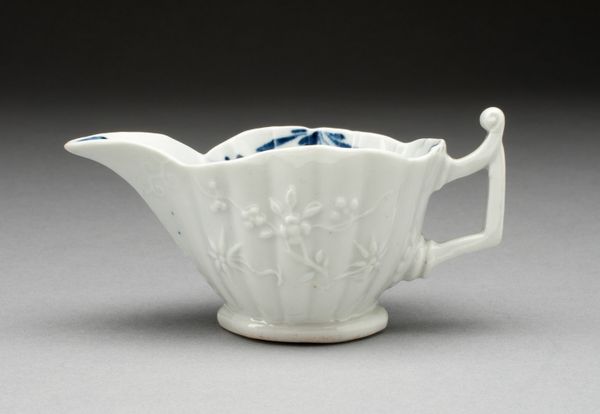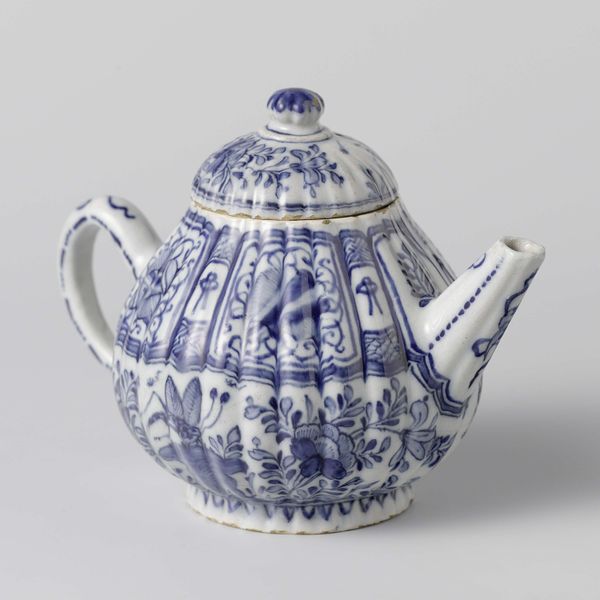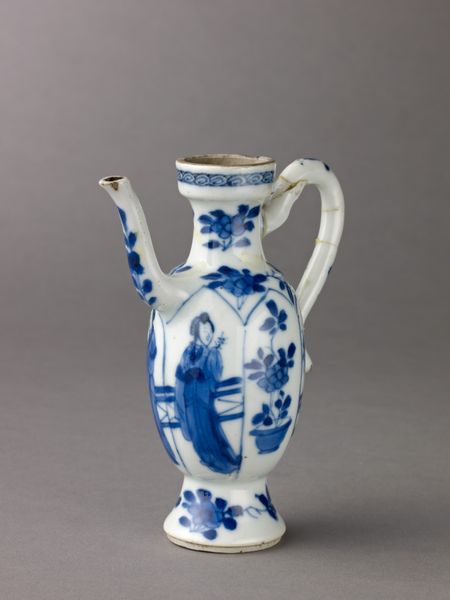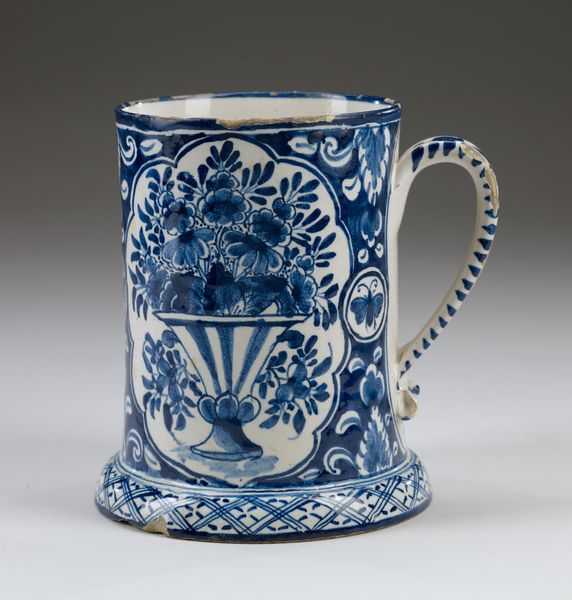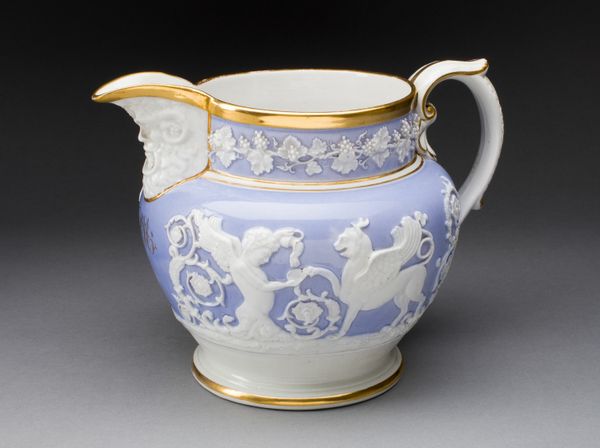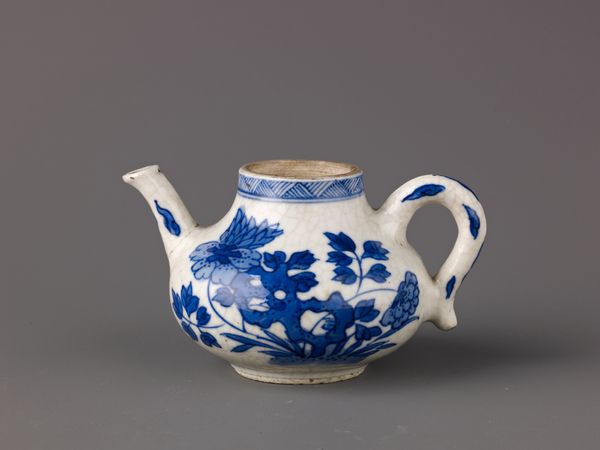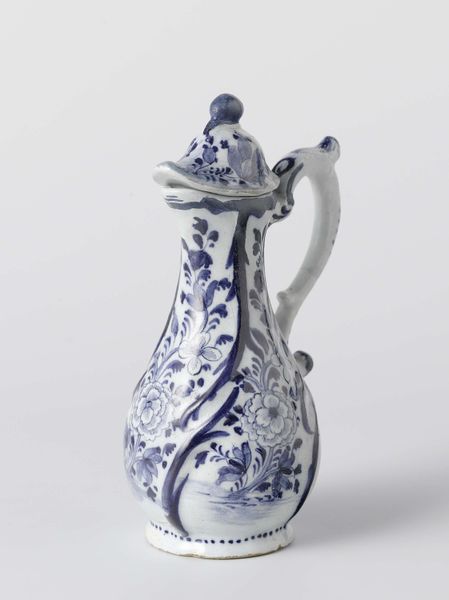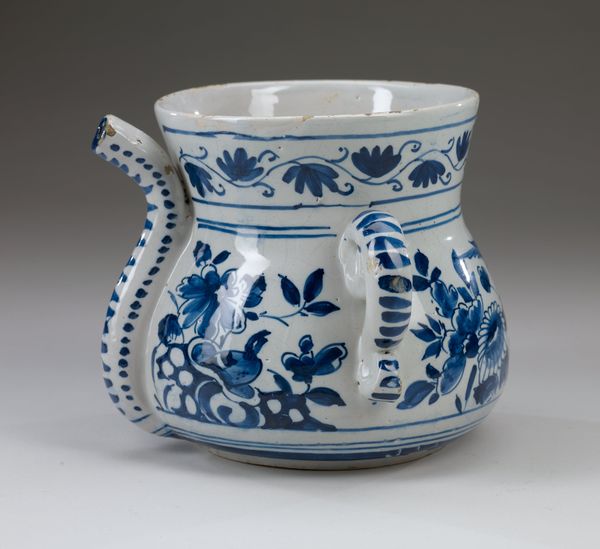
Schenkkan met oor en masker, beschilderd met bloem- en bladmotieven 1700 - 1725
0:00
0:00
ceramic, sculpture
#
baroque
#
dutch-golden-age
#
ceramic
#
sculpture
#
ceramic
#
decorative-art
Dimensions: height 20.5 cm, width 26.3 cm, depth 11.4 cm
Copyright: Rijks Museum: Open Domain
Curator: At first glance, it seems delicate, doesn’t it? It looks as though it’s been rendered entirely in soft blues and whites. Editor: Indeed. This is a ceramic piece titled “Schenkkan met oor en masker, beschilderd met bloem- en bladmotieven” which roughly translates to “Pitcher with ear and mask, painted with flower and leaf motifs.” It’s attributed to the Dutch Golden Age, specifically dating between 1700 and 1725. The term "Delftware" may come to mind due to its color scheme and subject matter. Curator: Absolutely, and considering its purpose and placement within a Dutch household of the time—let's think about its fabrication. The smoothness of the ceramic surface, and then the skilled application of these repeating floral designs. It speaks volumes about the socio-economic landscape enabling the production and consumption of decorative wares. The accessibility of material influenced how common it became and for whom. Editor: It’s remarkable how decorative arts such as these ceramics provide insight into the cultural values and daily life of the Dutch Golden Age. We have increasing trade leading to wealth to allow families to show off the prosperity to the guests in the home with beautiful sculptures such as this one. Blue and white pottery gained incredible popularity. Do you see any possible reason as to why? Curator: The mass manufacturing aspect interests me most. When compared to the art historical narratives of painters, sculptors, etc... ceramists often go overlooked. This jug and pitcher production, even in the Baroque period, would likely have a social component where an artisan isn’t viewed as a lone creative. Editor: Well, despite not having any distinct marks of artistic excellence, ceramic ware as such contributed immensely in establishing social and national identities, as these motifs were circulated among homes in this medium to reinforce societal values, status and wealth through something accessible to look at in the home. Curator: A mass manufactured form of propaganda, if you will. Even now, these Delftware objects function to cement an idea of Dutchness. Editor: Precisely. Examining objects like this reminds us how cultural history is deeply embedded in these beautifully designed, everyday items, influencing cultural perceptions, even today. Curator: Thank you! My analysis is that while beauty can certainly be appreciated for its aesthetic value, the modes of art production are a great insight into historical materialism.
Comments
No comments
Be the first to comment and join the conversation on the ultimate creative platform.
